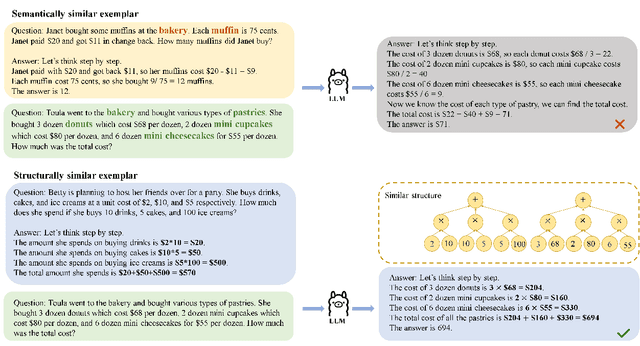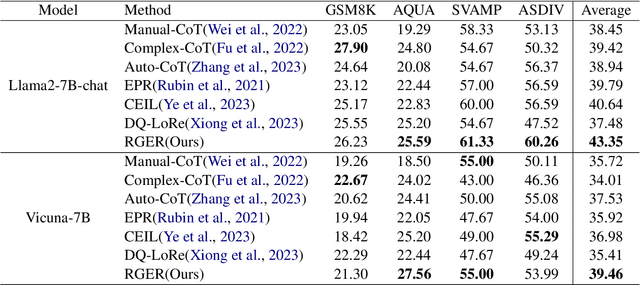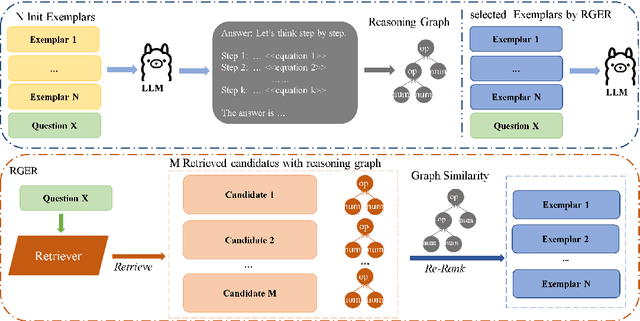Yukang Lin
MVPortrait: Text-Guided Motion and Emotion Control for Multi-view Vivid Portrait Animation
Mar 25, 2025Abstract:Recent portrait animation methods have made significant strides in generating realistic lip synchronization. However, they often lack explicit control over head movements and facial expressions, and cannot produce videos from multiple viewpoints, resulting in less controllable and expressive animations. Moreover, text-guided portrait animation remains underexplored, despite its user-friendly nature. We present a novel two-stage text-guided framework, MVPortrait (Multi-view Vivid Portrait), to generate expressive multi-view portrait animations that faithfully capture the described motion and emotion. MVPortrait is the first to introduce FLAME as an intermediate representation, effectively embedding facial movements, expressions, and view transformations within its parameter space. In the first stage, we separately train the FLAME motion and emotion diffusion models based on text input. In the second stage, we train a multi-view video generation model conditioned on a reference portrait image and multi-view FLAME rendering sequences from the first stage. Experimental results exhibit that MVPortrait outperforms existing methods in terms of motion and emotion control, as well as view consistency. Furthermore, by leveraging FLAME as a bridge, MVPortrait becomes the first controllable portrait animation framework that is compatible with text, speech, and video as driving signals.
HVIS: A Human-like Vision and Inference System for Human Motion Prediction
Feb 24, 2025Abstract:Grasping the intricacies of human motion, which involve perceiving spatio-temporal dependence and multi-scale effects, is essential for predicting human motion. While humans inherently possess the requisite skills to navigate this issue, it proves to be markedly more challenging for machines to emulate. To bridge the gap, we propose the Human-like Vision and Inference System (HVIS) for human motion prediction, which is designed to emulate human observation and forecast future movements. HVIS comprises two components: the human-like vision encode (HVE) module and the human-like motion inference (HMI) module. The HVE module mimics and refines the human visual process, incorporating a retina-analog component that captures spatiotemporal information separately to avoid unnecessary crosstalk. Additionally, a visual cortex-analogy component is designed to hierarchically extract and treat complex motion features, focusing on both global and local features of human poses. The HMI is employed to simulate the multi-stage learning model of the human brain. The spontaneous learning network simulates the neuronal fracture generation process for the adversarial generation of future motions. Subsequently, the deliberate learning network is optimized for hard-to-train joints to prevent misleading learning. Experimental results demonstrate that our method achieves new state-of-the-art performance, significantly outperforming existing methods by 19.8% on Human3.6M, 15.7% on CMU Mocap, and 11.1% on G3D.
Reasoning Graph Enhanced Exemplars Retrieval for In-Context Learning
Sep 17, 2024



Abstract:Large language models(LLMs) have exhibited remarkable few-shot learning capabilities and unified the paradigm of NLP tasks through the in-context learning(ICL) technique. Despite the success of ICL, the quality of the exemplar demonstrations can significantly influence the LLM's performance. Existing exemplar selection methods mainly focus on the semantic similarity between queries and candidate exemplars. On the other hand, the logical connections between reasoning steps can be beneficial to depict the problem-solving process as well. In this paper, we proposes a novel method named Reasoning Graph-enhanced Exemplar Retrieval(RGER). RGER first quires LLM to generate an initial response, then expresses intermediate problem-solving steps to a graph structure. After that, it employs graph kernel to select exemplars with semantic and structural similarity. Extensive experiments demonstrate the structural relationship is helpful to the alignment of queries and candidate exemplars. The efficacy of RGER on math and logit reasoning tasks showcases its superiority over state-of-the-art retrieval-based approaches. Our code is released at https://github.com/Yukang-Lin/RGER.
MambaTalk: Efficient Holistic Gesture Synthesis with Selective State Space Models
Mar 14, 2024Abstract:Gesture synthesis is a vital realm of human-computer interaction, with wide-ranging applications across various fields like film, robotics, and virtual reality. Recent advancements have utilized the diffusion model and attention mechanisms to improve gesture synthesis. However, due to the high computational complexity of these techniques, generating long and diverse sequences with low latency remains a challenge. We explore the potential of state space models (SSMs) to address the challenge, implementing a two-stage modeling strategy with discrete motion priors to enhance the quality of gestures. Leveraging the foundational Mamba block, we introduce MambaTalk, enhancing gesture diversity and rhythm through multimodal integration. Extensive experiments demonstrate that our method matches or exceeds the performance of state-of-the-art models.
ZO-AdaMU Optimizer: Adapting Perturbation by the Momentum and Uncertainty in Zeroth-order Optimization
Dec 23, 2023Abstract:Lowering the memory requirement in full-parameter training on large models has become a hot research area. MeZO fine-tunes the large language models (LLMs) by just forward passes in a zeroth-order SGD optimizer (ZO-SGD), demonstrating excellent performance with the same GPU memory usage as inference. However, the simulated perturbation stochastic approximation for gradient estimate in MeZO leads to severe oscillations and incurs a substantial time overhead. Moreover, without momentum regularization, MeZO shows severe over-fitting problems. Lastly, the perturbation-irrelevant momentum on ZO-SGD does not improve the convergence rate. This study proposes ZO-AdaMU to resolve the above problems by adapting the simulated perturbation with momentum in its stochastic approximation. Unlike existing adaptive momentum methods, we relocate momentum on simulated perturbation in stochastic gradient approximation. Our convergence analysis and experiments prove this is a better way to improve convergence stability and rate in ZO-SGD. Extensive experiments demonstrate that ZO-AdaMU yields better generalization for LLMs fine-tuning across various NLP tasks than MeZO and its momentum variants.
Consistent123: One Image to Highly Consistent 3D Asset Using Case-Aware Diffusion Priors
Sep 29, 2023Abstract:Reconstructing 3D objects from a single image guided by pretrained diffusion models has demonstrated promising outcomes. However, due to utilizing the case-agnostic rigid strategy, their generalization ability to arbitrary cases and the 3D consistency of reconstruction are still poor. In this work, we propose Consistent123, a case-aware two-stage method for highly consistent 3D asset reconstruction from one image with both 2D and 3D diffusion priors. In the first stage, Consistent123 utilizes only 3D structural priors for sufficient geometry exploitation, with a CLIP-based case-aware adaptive detection mechanism embedded within this process. In the second stage, 2D texture priors are introduced and progressively take on a dominant guiding role, delicately sculpting the details of the 3D model. Consistent123 aligns more closely with the evolving trends in guidance requirements, adaptively providing adequate 3D geometric initialization and suitable 2D texture refinement for different objects. Consistent123 can obtain highly 3D-consistent reconstruction and exhibits strong generalization ability across various objects. Qualitative and quantitative experiments show that our method significantly outperforms state-of-the-art image-to-3D methods. See https://Consistent123.github.io for a more comprehensive exploration of our generated 3D assets.
 Add to Chrome
Add to Chrome Add to Firefox
Add to Firefox Add to Edge
Add to Edge